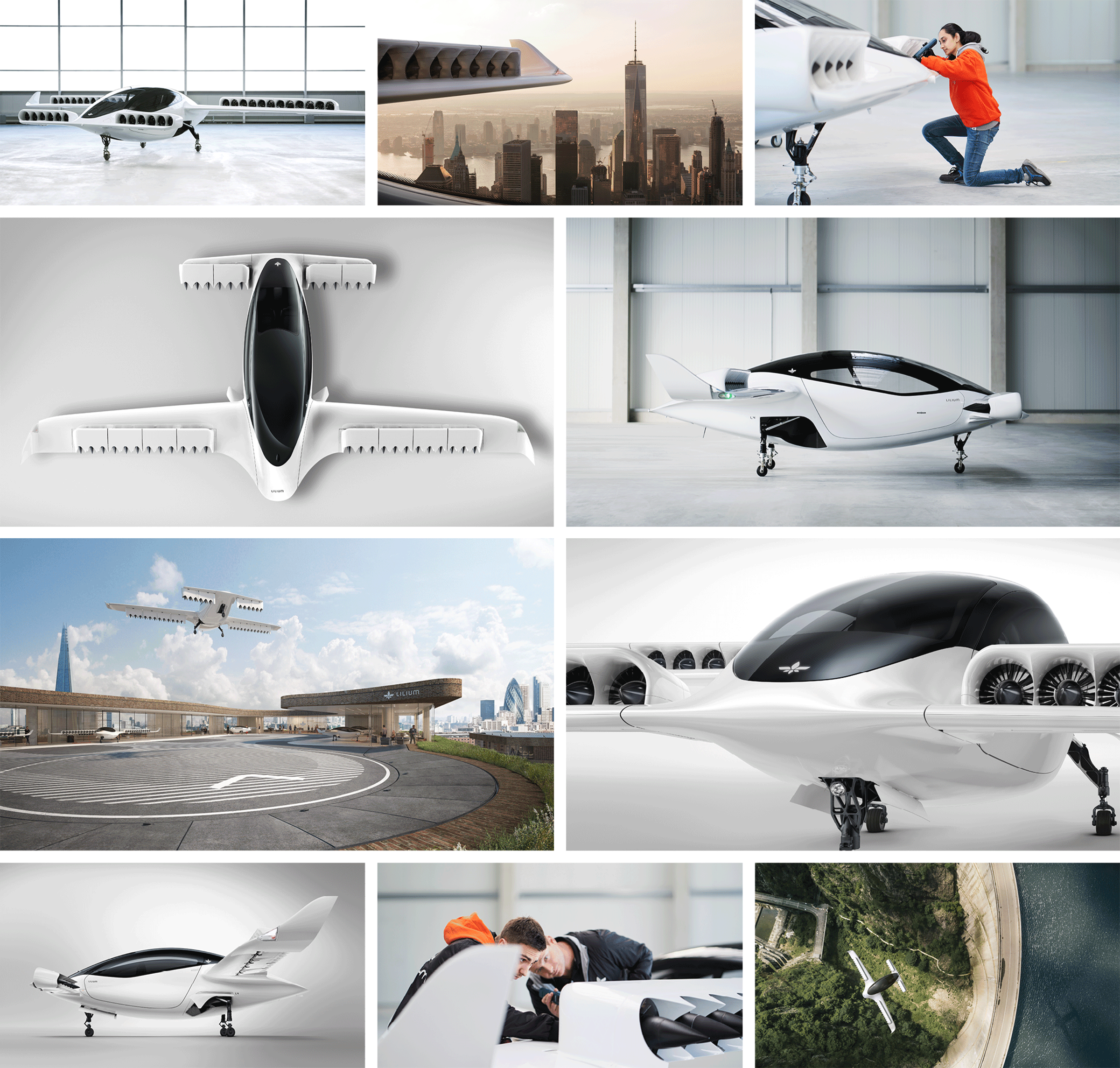Known as the Lilium Jet, the prototype aircraft is powered by 36 electric jet engines. The main wings house 24 engines, while a smaller wing bank at the front of the plane is home to the remaining 12. Maximum power output of 2,000 horsepower is available for take-off and landing, but Lilium claims less than 10 per cent of this will be required for cruising flight. The air-taxi has no tail, no rudder, no propellers, no gearbox and just one moving part in each engine.
Founded in Munich in 2015, Lilium has attracted more than $100m in venture capital. In 2017 it unveiled a two-seater electric VTOL aircraft that served as a proof-of-concept for the Lilium Jet. After extensive ground testing, the latest iteration performed its maiden flight in Munich on May 4th, controlled remotely from the ground. This first test saw the vehicle hover in place just a few feet off the ground, with transition flight and cruise testing to come further down the line. With a projected range of 300km, the air-taxi will be four times faster than a ground taxi, yet competitive on price, according to its creators.

“Today we are taking another huge step towards making urban air mobility a reality,” said Daniel Wiegand, co-founder and CEO of Lilium. “In less than two years we have been able to design, build and successfully fly an aircraft that will serve as our template for mass production. Moving from two to five seats was always our ambition as it enables us to open up the skies to many more travellers. Whether its friends or families flying together or business travellers ride-sharing into the city, having five seats delivers an economy of scale you just can’t achieve with two.”
Lilium is pushing an aggressive timeline for the introduction of its on-demand air-taxi service, saying it expects to be fully-operational in numerous cities around the world by 2025, with trial services coming online earlier. It remains to be seen if airspace regulations and infrastructure will accommodate that ambitious target, but with competitors like Uber also investing heavily in the sector, air-taxis could soon become a feature in our urban skies.





Poll: Should the UK’s railways be renationalised?
I think that a network inclusive of the vehicles on it would make sense. However it remains to be seen if there is any plan for it to be for the...